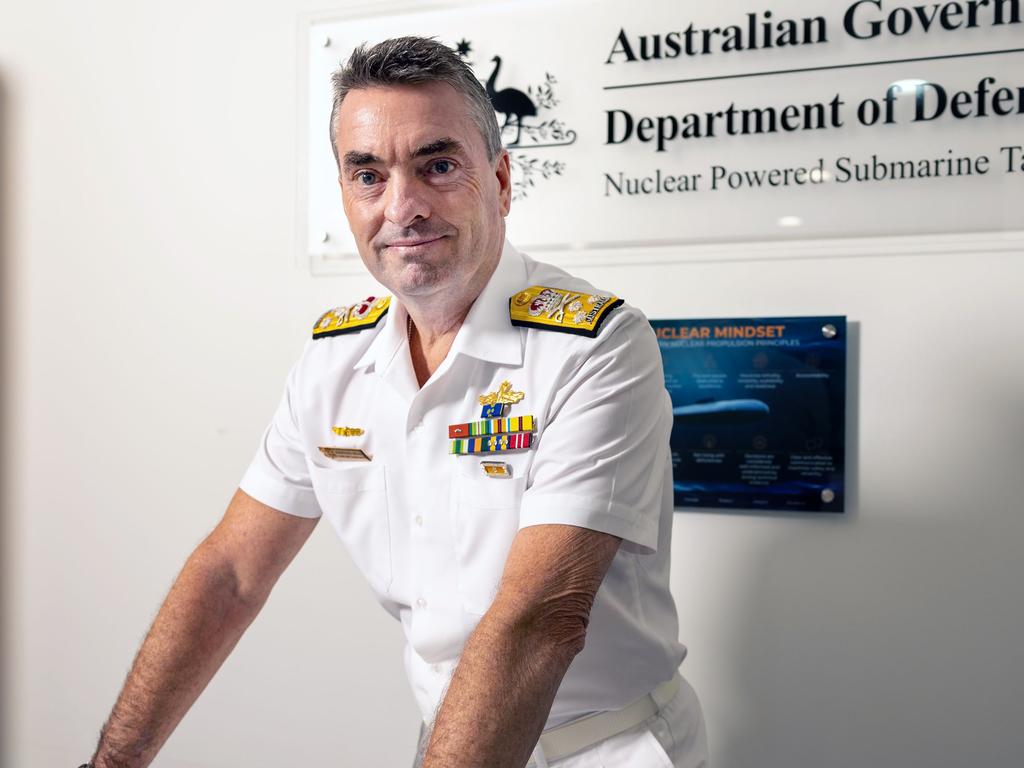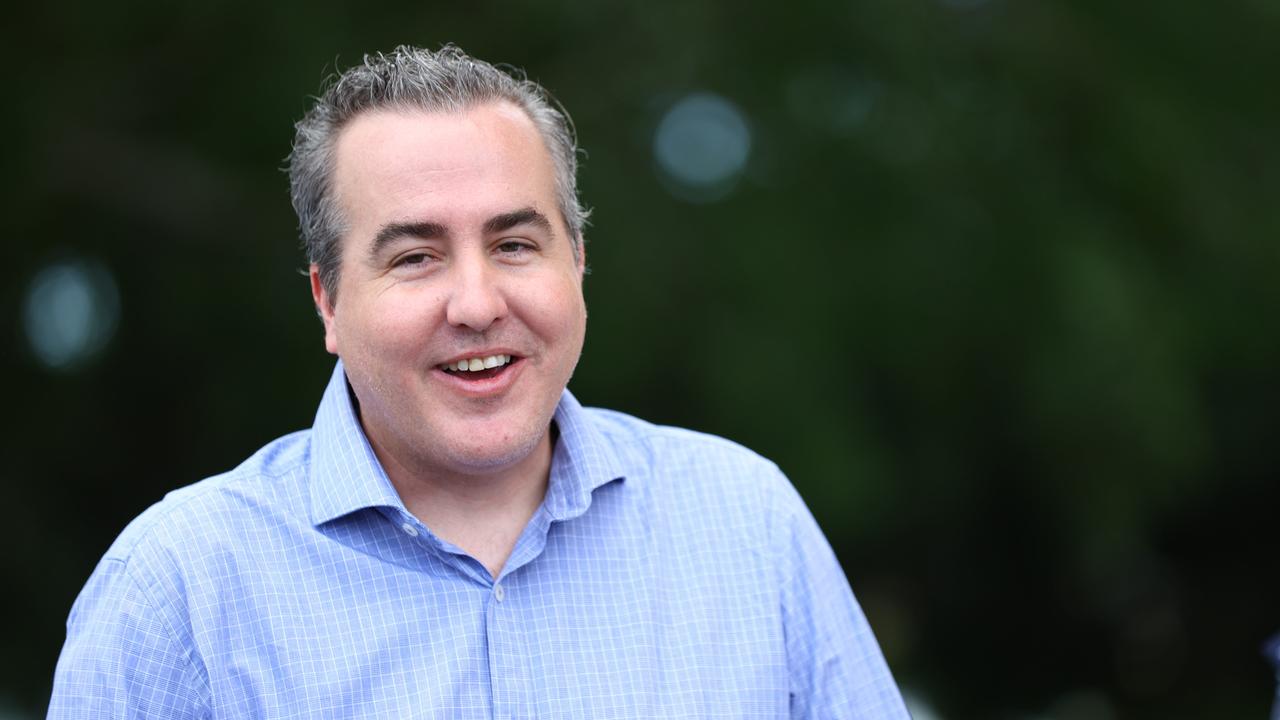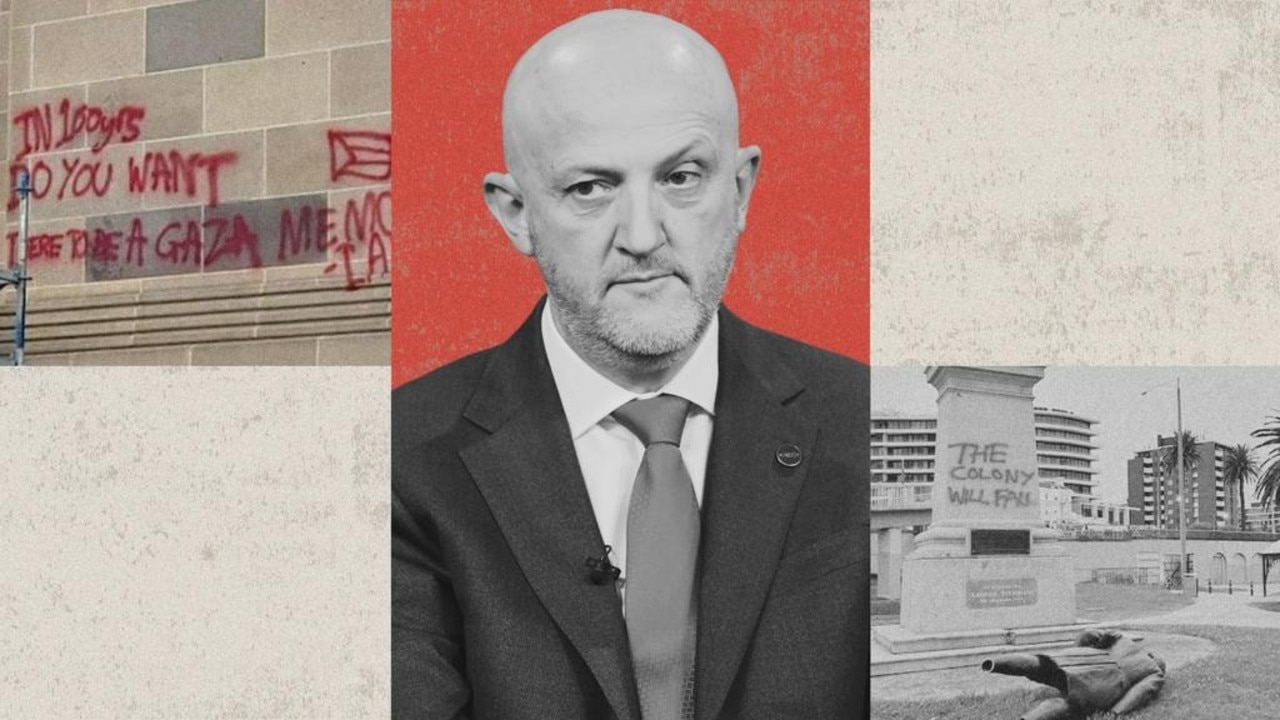
Somewhere in the South Australian parliamentary library lies a dusty copy of an excellent royal commission report that was killed off by rank party politics but revived by the AUKUS deal.
Commissioned by Jay Weatherill’s Labor government, the 2016 Nuclear Fuel Cycle Royal Commission headed by former SA governor Kevin Scarce delivered a detailed 360-page report recommending the creation of a nuclear waste disposal facility in the state’s outback.
While no site was specified, the report said SA had the requisite geographical stability, remoteness and low population density to provide the perfect location to store much of the world’s nuclear waste. The impetus for the idea was twofold: first, as an exporter of uranium, Australia had a role to play as a stable democracy in safely ridding the world of this toxic waste; second, SA stood to create a lucrative revenue stream by taking nuclear by-products that increase in quantity each year.
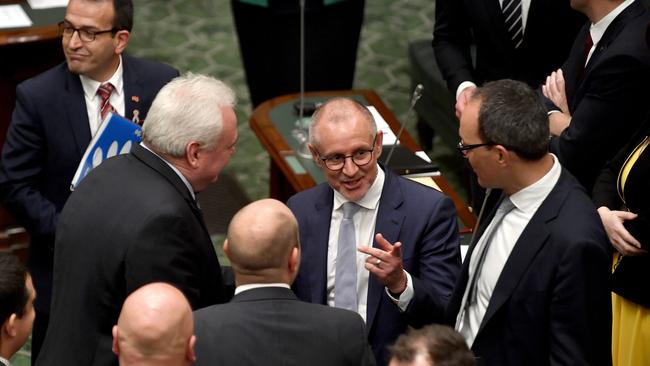
Now, thanks to AUKUS, the motivation for the creation of a waste facility comes from national security – to house spent nuclear fuel used to propel submarines. Under the terms of AUKUS and as signatories to the Treaty on the Non-Proliferation of Nuclear Weapons, we now have no choice but to create a domestic nuclear waste facility somewhere in Australia.
Foreign Minister Penny Wong has told The Australian no site has been selected and the facility does not need to be operational until the 2050s. Its requirements will exceed those of the new low-level waste repository in the outback SA town of Kimba established by the Morrison government, meaning another site must be found.
It is here where the Scarce report can help provide a road map for what to do next. And when politicians of every hue are wincing privately at the $368bn bill for the subs, Scarce’s blueprint also raises some interesting ideas as to how our nation could recoup some of that eye-watering outlay.
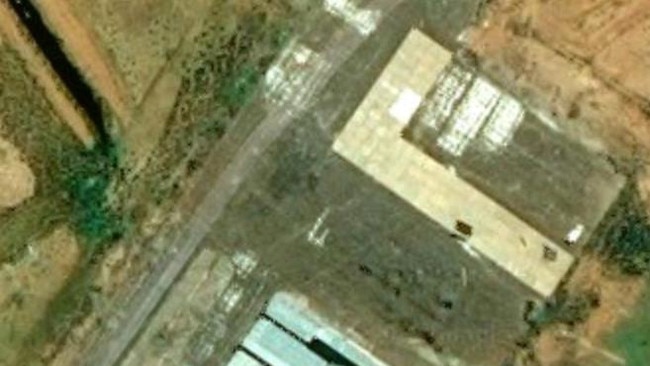
The royal commission found SA stood to gain close to $100bn in revenue from storing waste from participating countries, which would have shipped their nuclear leftovers to Australia and had them trucked into the bush and buried underground.
The report stated: “Viability analysis undertaken for the commission determined, on conservative estimates, that a waste disposal facility could generate $257bn in total revenue, with costs of $145bn over the 120-year life of the project, including a $32bn reserve fund for facility closure and ongoing monitoring. The commission considers that this could be achieved safely.”
Scarce was in no doubt as to the economics of the idea, with the firm caveat that safety had to come first. “The import of used fuel and intermediate level waste for permanent geological disposal in South Australia has the potential to deliver significant economic benefits to the state. It is a rare opportunity, and if realised could provide an opportunity for future generations of South Australians,” he said.
“The immediate issue … is whether it considers the potential opportunities to be of sufficient benefit and that it can be done safely. The commission’s firm conclusion is that this opportunity should be actively pursued, and as soon as possible.”
The report was framed around visits to several nuclear-powered nations and numerous talks with leading nuclear experts. Politics being what it is, the idea was killed off by opportunism and cowardice. The SA Liberals pulled bipartisan support for the royal commission ahead of the 2018 election, and the Weatherill government then used a gimmicky “citizens jury” heavily populated by Greens activists to kill the idea.

Privately, though, Weatherill was keen if not wholly committed to pursuing the idea.
There are several MPs in the Malinauskas government who still think it’s a good idea and, tellingly, Peter Malinauskas has stood alone among premiers in refusing to take a NIMBY stance on the question. While West Australian Premier Mark McGowan has nominated the SA defence site Woomera as his preferred location, and Daniel Andrews stated flatly that Victoria would play no part in the process, Malinauskas has insisted he is keeping an open mind.
He told The Australian this week the waste site should be determined “in the best interest of the nation’s security, not the best interests of a parochial argument”. He said he was prepared to accept a scientific recommendation that the site should be located in SA.
University of Adelaide-trained nuclear scientist John Harries from the Australian Nuclear Association says there are many places on the Australian mainland that are geologically suitable for a waste disposal site.
“I would say WA and SA are the most likely but there is no reason why this couldn’t be done in many sites across Australia,” Harries says. “The amount of waste from the submarines we are talking about is very small so it would not need to be a vast facility. The facility that was envisaged in the SA royal commission was on a larger scale and designed to take waste from all over the world on a commercial basis.
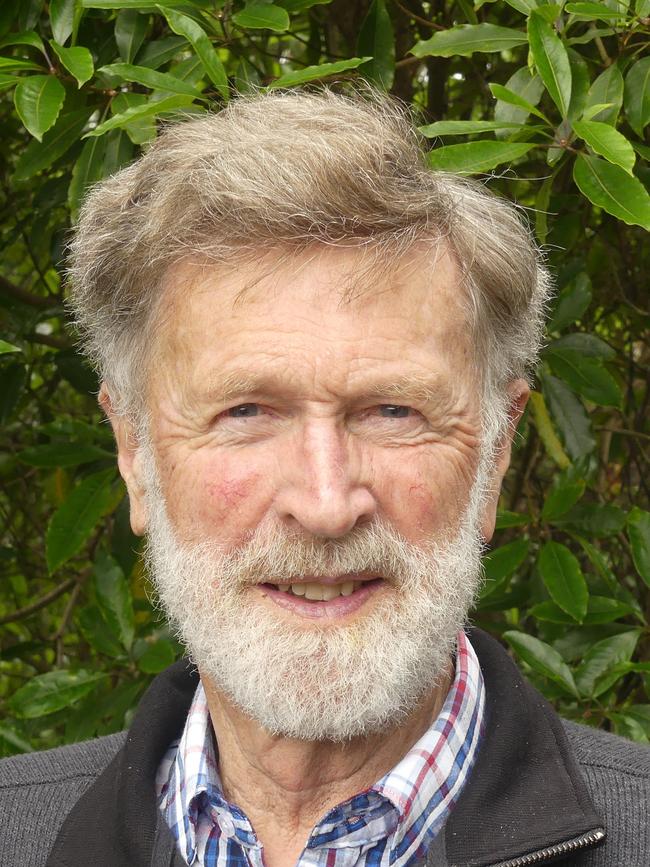
“As far as AUKUS stands we only have the responsibility to deal with the waste we have generated through the submarines so we are not talking about a very large quantity.”
Harries says Australia has a big opportunity to be one of the first countries to create a fully secure and permanent underground nuclear waste storage facility. The only one that exists is on the island of Olkiluoto off Finland’s west coast. The waste is entombed in copper casks that are filled with a water-absorbing clay called bentonite, then buried 430m below ground, built to withstand any seismic or tectonic shifts for the next 100,000 years.
“The Finns are showing how it is done,” Harries says. “There are a number of countries in Europe that are looking at creating proper disposal facilities like these but the only one that will be up and running in an operational sense is in Finland. It is only 250km from Helsinki and not far from a town of 40,000 people so we are not even talking about something that is particularly remote. But they’ve got good rocks. It is the only place in the world where the waste is stored underground.
“The technology on all this is now very clear, even though other countries seem to be having problems getting them built.”
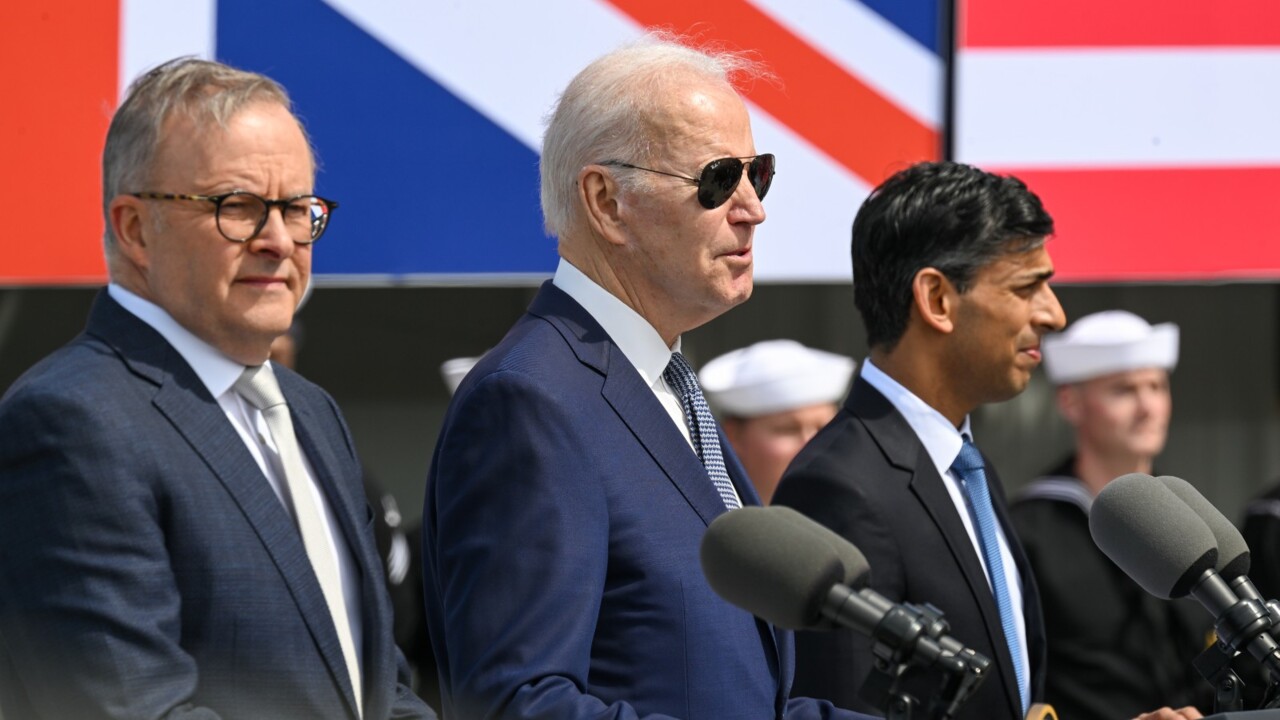
For his part, Scarce says the arguments spelled out in his report are as valid today as they were in 2016. “My view has not changed, we need to dispose safely of the waste we have created,” he says.
Now that Australia has a binding obligation to store waste under the AUKUS deal, there may yet be an opportunity for SA to broaden the remit of that endeavour towards something like that envisaged by the royal commission. And unlike McGowan and Andrews, Malinauskas – who is on the record as an in-principle supporter of nuclear power but opposed only on cost grounds – just may be the man to embrace it.
Especially as the Weatherill government’s own polling on the issue showed significant majority support for the idea as Scarce led a lengthy round of media engagements in SA spruiking the idea.
Seven years on, his report is still well worth a read for its sensible suggestion that we have a grown-up debate about nuclear power generation. This line from the report makes perfect sense amid the crisis over affordable energy: “Nuclear power generation would not be commercially viable in SA under current market rules, but should be considered as a future low-carbon energy source to contribute to national emissions reduction targets.”


